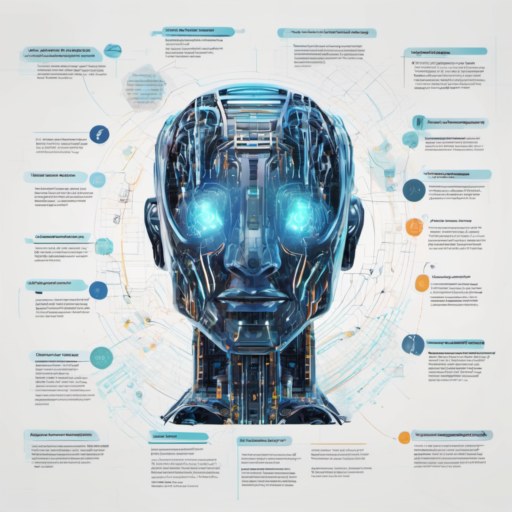Explainability and Interpretability
numerous AI models, especially deep literacy models, function as” black boxes” with opinions that are delicate to interpret. Developing models that are both important and interpretable is a significant challenge.
Ethics and Bias
icing that AI systems are fair, transparent, and free from bias is pivotal. This involves detecting and mollifying impulses in data and algorithms and creating ethical fabrics for AI deployment.
conception
utmost AI models exceed in specific tasks but struggle with generalizing across different tasks or disciplines. Developing AI that can generalize knowledge and chops in a manner analogous to mortal literacy is a major exploration thing.
Robustness and Security
AI systems can be vulnerable to inimical attacks and other security pitfalls. Enhancing the robustness and security of AI against similar pitfalls is essential for safe deployment in critical operations.
Data effectiveness
numerous current AI models bear large quantities of labeled data for training. probing styles for reducing data reliance, similar as many- shot literacy and unsupervised literacy, is a precedence.
Scalability
As AI models come more complex, the computational coffers needed for training and deployment increase. Chancing ways to gauge AI systems efficiently is a significant challenge.
Integration with mortal Knowledge
Combining AI with mortal knowledge and logic, similar as incorporating sphere moxie into AI models, remains a complex task.
Ethical AI Decision- Making
Developing AI that can make opinions grounded on ethical principles and moral values is a growing area of interest, particularly in independent systems and AI governance.
mortal- AI Interaction
Enhancing the commerce between humans and AI, making AI more intuitive and accessible fornon-experts, is vital for broader relinquishment and trust.
Sustainability
Addressing the environmental impact of AI, particularly the energy consumption associated with training large models, is getting decreasingly important.
Long- term Autonomy
Creating AI systems able of long- term independent operation, particularly in dynamic and changeable surroundings, poses significant challenges.
Multimodal Learning
Developing AI that can reuse and understand multiple types of data contemporaneously(e.g., textbook, images, audio) to ameliorate performance and versatility.
reason and logic
Moving from correlation- grounded models to those that understand and reason about reason is pivotal for more accurate and dependable AI systems.
Personalization and Rigidity
Creating AI systems that can acclimatize to individual stoner preferences and needs over time without taking expansive retraining.
Cognitive and Emotional Intelligence
structure AI that can understand and respond to mortal feelings and parade social intelligence in relations.
These challenges represent both the current limitations of AI and the openings for groundbreaking advancements. Addressing these issues requires interdisciplinary collaboration and innovative approaches across colorful fields of study.
The proposed result approaches for each of the AI exploration challenges linked
Explainability and Interpretability
Approach Develop mongrel models that combine transparent models(e.g., decision trees) with deep literacy, usepost-hoc interpretability ways like SHAP( SHapley Additive exPlanations), and design innately interpretable models.
Ethics and Bias
Approach Implement fairness- apprehensive algorithms, conduct bias checkups, develop robust datasets that are representative and different, and integrate ethical guidelines into AI development processes.
conception
Approach Research meta- literacy and transfer literacy ways, design more protean model infrastructures, and use synthetic data addition to pretend a wider range of scripts.
Robustness and Security
Approach Develop inimical training styles, incorporate robust optimization ways, use formal verification tools to insure model integrity, and establish nonstop monitoring systems for stationed models.
Data effectiveness
Approach Invest in unsupervised,semi-supervised, and tone- supervised literacy styles, influence transfer literacy to apply knowledge from high- resource disciplines to low- resource disciplines, and enhance data conflation and addition ways.
Scalability
Approach Optimize model infrastructures for effectiveness(e.g., via pruning and quantization), employ distributed computing and allied literacy, and use more effective training algorithms like meager representations.
Integration with mortal Knowledge
Approach produce cold-blooded AI systems that combine machine literacy with rule- grounded systems, use knowledge graphs and ontologies to render sphere moxie, and engage sphere experts in the training process.
Ethical AI Decision- Making
Approach Develop fabrics for bedding ethical logic in AI systems, use underpinning learning with ethical constraints, and incorporatemulti-stakeholder perspectives to inform decision- making processes.
mortal- AI Interaction
Approach Design stoner-friendly interfaces, use natural language processing( NLP) to grease communication, develop AI that can learn from stoner feedback, and insure translucency in AI opinions to make trust.
Sustainability
Approach Research energy-effective model infrastructures, develop algorithms that bear lower computational power, use pall- grounded results with renewable energy sources, and optimize tackle for AI workloads.
Long- term Autonomy
Approach Develop lifelong literacy algorithms that can acclimatize over time, use robustmulti-agent systems, produce simulation surroundings for nonstop testing, and insure redundancy and fault forbearance in AI systems.
Multimodal Learning
Approach Design models that can reuse and integrate multiple data types, influencecross-modal transfer literacy, and develop standardized protocols for multimodal data emulsion.
reason and logic
Approach Incorporate unproductive conclusion ways into machine literacy models, use counterfactual logic styles, and develop models that can pretend and test unproductive suppositions.
Personalization and Rigidity
Approach Use underpinning learning to acclimatize to individual druggies, apply nonstop literacy systems, and develop customizable AI results that allow druggies to give preferences and feedback.
Cognitive and Emotional Intelligence
Approach Research affective computing to enable emotional recognition, develop models that can understand environment and nuance in mortal relations, and design AI with social intelligence fabrics to grease better mortal- AI connections.
Each of these result approaches points to address specific challenges in AI exploration by using a combination of innovative ways, interdisciplinary exploration, and practical executions. This holistic approach is essential for making significant strides in AI capabilities and operations.




